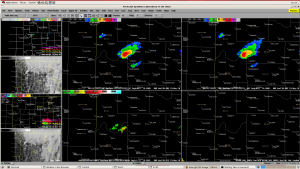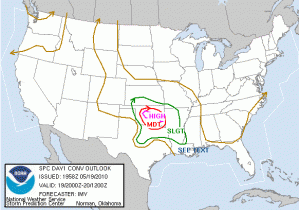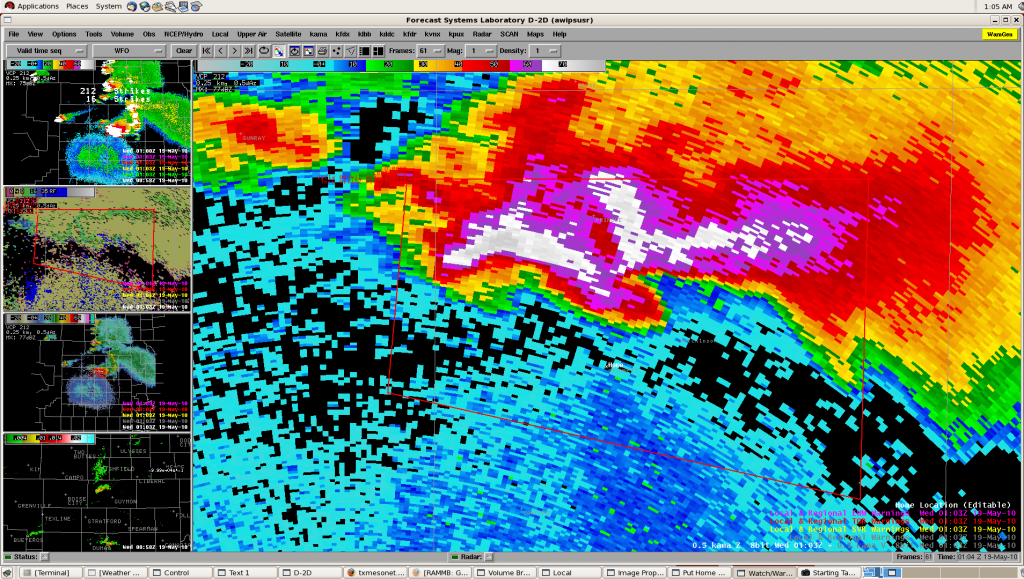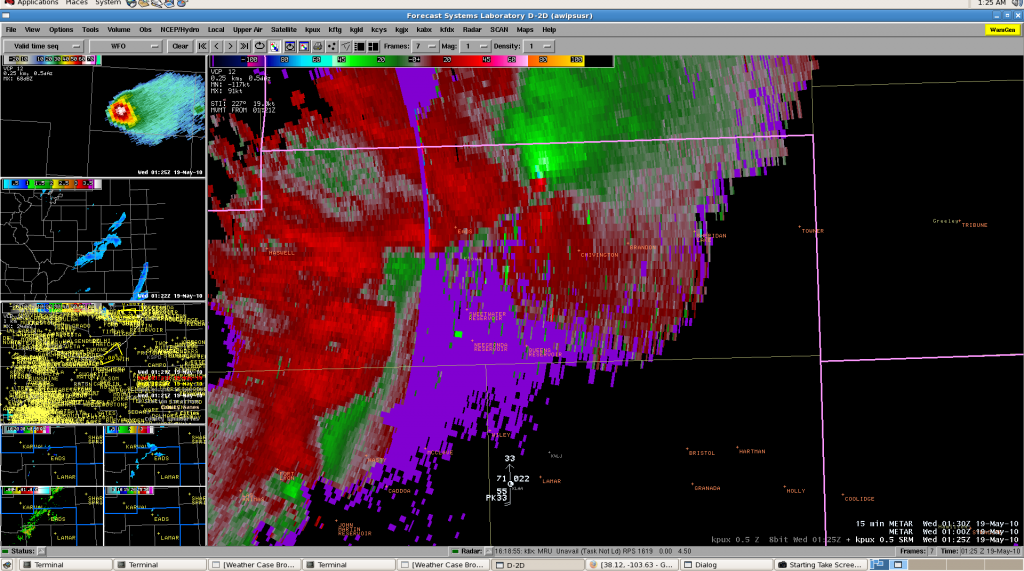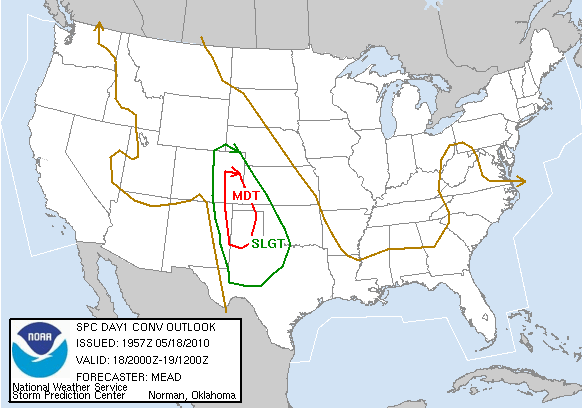Activities got started off with two teams working two separate WFOs, Pueblo CO, and Amarillo TX. The Pueblo team had a number of widespread severe storms to deal with, and the Amarillo team primarily had one large tornadic supercell, which also happened to be the VORTEX2 storm. The V2 storm ended up producing a number of short-lived tornadoes and a lot of damaging hail as it tracked mainly due east across Dumas TX and beyond.

The GOES-R conviction initiation (CI) products were of little use today, owing to cirrus obscuration which tends to inhibit detection of the CI signatures. In addition, we had a technical AWIPS issue such that the sub-regional scale satellite imagery was localized to Norman (OUN) and not the chosen WFOs, so that only the CONUS scale images could be used, which only update every 30 minutes. [Note: This problem ends up getting solved later.] There is more information about this day’s GOES-R activities on the GOES-R HWT Blog daily summary.
The forecasters were also getting their first real taste of using the MRMS products for warnings. However, we had another AWIPS technical issue that was causing the MRMS grids to load up very slowly (auto-updating was fine). Because of this, it is possible that the warning results for this, especially those comparing lead time, might be compromised. [Note: This problem was partially the result of a faulty network card on the server, and we changed the location of MRMS product storage. This offered some but not all of the relief.]
Since this was the first day of a real-time IOP for 2010, we’ve learned that not all the wrinkles are ironed out. We also had some good discussion on warning policies, including whether to issue separate SVRs on the cores of Tornado Warned storms, or to use the TOR to cover both the tornado and severe threats. In addition, there was some discussion on the varying policies for Severe Weather Statement (SVS) issuance per WFO and per region. The differences were interesting, and there is not a single policy NWS-wide.
Greg Stumpf (EWP2010 Operations Coordinator)

